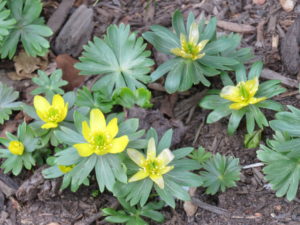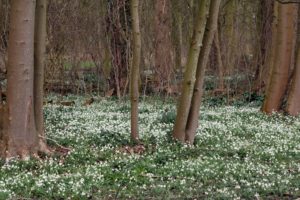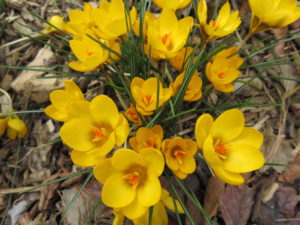These tiny flowering bulbs are truly early birds. Fall planted bulbs often emerge in late January and February here in the Southern Appalachian region. Once they are up and blooming, frigid temps don’t damage the flowers or plants. Instead, the winter weather causes the hardy blooms to last and last in February and March. They often emerge during an unseasonable warm period lasting 7-10 days in the 50’s days with little to no snow cover. Most common choices include snowdrops (Galanthus), winter aconite (Eranthis), glory of the snow (Chionodoxa), early crocus (Crocus spp.), and grape hyacinths (Muscari).
Bulbs should be planted in early fall. To create a showy impact, mass these early flowering beauties in patches of 10, 25 or more bulbs. Spacing will vary by which bulbs you purchase. They will thrive in dappled woodland shade to partial sunlight, tolerate practically any soil, and seem to live forever. Minor bulbs make great companions for taller bulbs. Plant some under deciduous shrubs and trees or in a bed of winter pansies. Over the years minor bulbs are truly special. Minor bulbs will perennialize and come back every year.
Mr. Brent Heath, of Brent and Becky’s Bulbs in Gloucester, VA, passes along some varietal recommendations. Try early flowering crocus like C. ancyrensis ‘Golden Bunch’ with tangerine yellow blossoms or the many color choices of “tommies” (C. tommasinianus). ‘Christmas Pearl’ grape hyacinths (Muscari armeniacum ‘Christmas Pearl’) bear 4-6 inch double blue flowers beginning in late February. Rijnveld’s Early Sensation’ with golden yellow opening in mid-to late January in zone 7.




 Posted in
Posted in 
